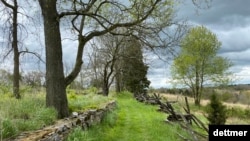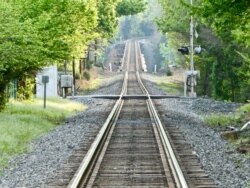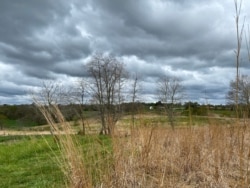West Virginia is no stranger to pandemics.
In 1918, as the war in Europe was drawing to a bloody finale, the state’s newspapers, many of them long gone, blazoned stories across their front pages chronicling the relentless advance of the Spanish influenza — the misnamed, devastating respiratory flu which first appeared in an army fort in Kansas, not Spain.
Nearly 3,000 West Virginians are estimated to have died in the pandemic. Many were buried without funeral rites because of the contagiousness of the disease — as was the case during a smallpox outbreak in the Mountain State in 1903. This time around — with the coronavirus — Mountaineers, as West Virginians are nicknamed, have at least been allowed funeral ceremonies. But under lockdown rules, observances have been limited to a handful of family members.
I hadn’t expected to be in West Virginia this month. I left Italy, where I’m based, as Prime Minister Giuseppe Conte expanded a coronavirus lockdown from the hard-hit north across the rest of the country. I calculated I’d be gone for a couple of weeks on a business trip, even making sure I left the house well-stocked for a rapid turnaround. Travel restrictions and the absence of direct flights back to Rome from Washington, D.C., have prevented a quick return. With Britain heading for a what may become the worst death toll anywhere in Europe, who wants to transfer through London?
But if you are going to be waylaid, then the Mountain State, which glories in its self-description as wild and wonderful, is an excellent place to contemplate one’s place in a world turned upside down.
West Virginia, a scenic, slower-paced state in the tree-covered Appalachian Mountains, has been lightly touched in comparison with its neighbors; it was the last U.S. state to record a coronavirus case. As I write, there have been just 1,079 confirmed cases and 37 deaths. The state appears to have been spared the worst largely thanks to its rural nature and absence of large cities. Most cases are focused in the eastern Panhandle, many of whose residents commute to Washington and nearby tech firms in northern Virginia.
A large proportion of the remaining cases has been concentrated in a handful of nursing homes elsewhere in the state.
Prompt action by West Virginia’s governor, Jim Justice, also no doubt helped. Even before cases were confirmed, Justice shuttered schools and then followed neighboring Virginia and Maryland with a strict lockdown — a politically bold move in a state full of doughty folk who bridle at being bossed around. In the hollers (small valleys), there was muttering, with some questioning why lives should be thrown into disarray by what was clearly just an influenza.
Outside Ray’s Gun Store near the town of Martinsburg, one 72-year-old West Virginian said as he left his pick-up truck, “I’m pretty darn sure I had this corona a few weeks ago.” His grandson testified his agreement, nodding vigorously. “And it weren’t that bad,” the grandfather added. “So I don’t know why that darn fool Jim Justice would close the state.” There was a chorus of general approval among the small crowd who had thronged to Ray’s because they feared Justice would order gun stores closed.
West Virginians can be as unyielding as Appalachian granite rock. But for all their flintiness they’re more neighborly than most — as long as you don’t disrespect the Mountain State. History has taught Mountaineers to be self-sufficient — a frontier culture of trapping, hunting, trading, fighting Native Americans and logging shaped the state. But as you’ll find in most hard-scrabble rural cultures, there’s a recognition that people need to pull together and pool self-sufficiency in times of crisis.
A poor state, and one all too often overlooked and disparaged by the rest of America for being ‘hillbilly,’ Mountaineers are rightly wary of outsiders, who in past times exploited the state’s natural resources of coal and timber, leaving pollution and wrecked lungs behind. Mountaineers expect little help to come from outside — so best to pull together. They are doing that now.
In my town of Shepherdstown, an historic college town overlooking ‘America’s River,’ the Potomac, ‘angel shoppers’ are running errands for the elderly; a fund has been organized to help furloughed restaurant staff; and the small town has been a hive of mask-making. The Four Seasons bookstore has been offering virtual conversations with authors — the latest is on memoir writing.
When some started to complain about the lockdown, one notable posted on the community Facebook page that grumbling wasn’t in the spirit of the town’s 300-year history. The writer noted that Shepherdstown folk had put their best foot forward in September 1862 by opening up their homes and turning log-cabin and red-bricked dwellings into improvised field hospitals for the wounded and dying from the battle of Antietam -- a key battle in America’s brutal civil war. The battle was fought just across the Potomac from where I write.
The 23,000 casualties came in waves, surging at key moments on the grim day as Union and Confederate soldiers skirmished over a 40-acre cornfield, fought for mastery of a sunken road, and clashed ferociously at Burnside’s Bridge. “We poured volley after volley, doubtless with terrible execution,” noted Private Berry Benson, a South Carolinian who fought from a hill overlooking the cornfield.
The bloodiest single day in American military history, Antietam, fought in the third year of the internecine struggle, ended in a tactical draw, but compelled a Confederate retreat and gave President Abraham Lincoln the opportunity to issue the Emancipation Proclamation, which declared “that all persons held as slaves” within the rebellious states “are, and henceforward shall be free.”
Hikes across the battlefield, now a national park, have become the highlight of my days, breaks from remote reporting, virtual interviewing, and messaging back and forth with contacts, politicians, and epidemiologists. Skittish brown-eyed deer lift their heads and stare at me before fleeing deeper into the woods; bay-breasted warblers trill at my approach; interrupted red-headed woodpeckers glide way.
Walking Antietam makes me think of a line written by English novelist Hilary Mantel: “You can feel the past is always trickling under the soil, a slow leak you can’t trace. Often, meaning is only revealed retrospectively.” And what meaning will history subsequently accord this pandemic?









